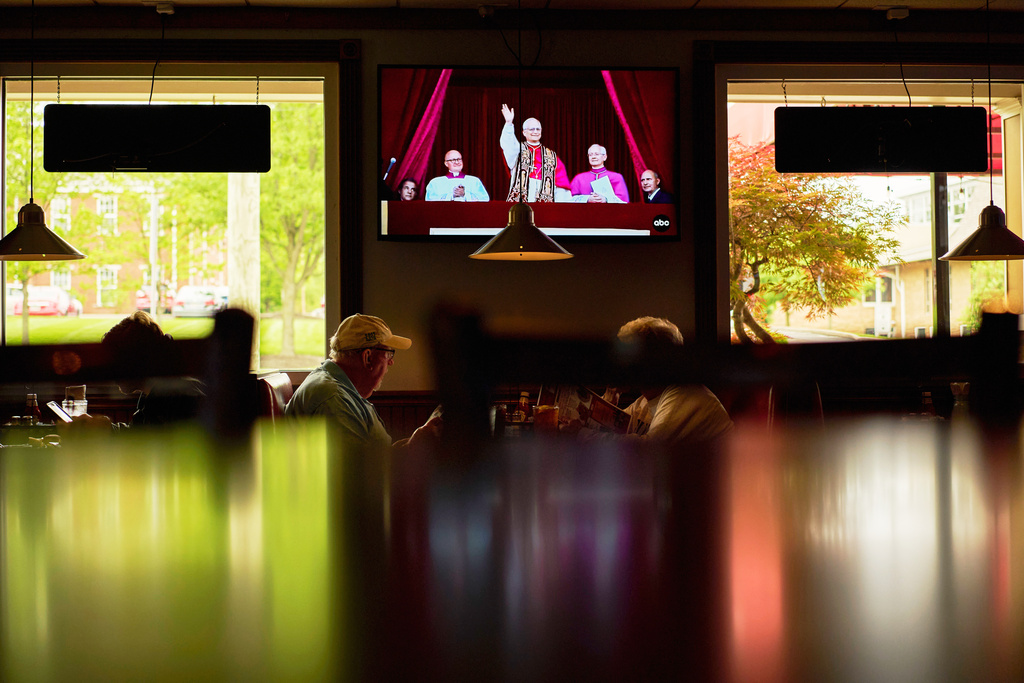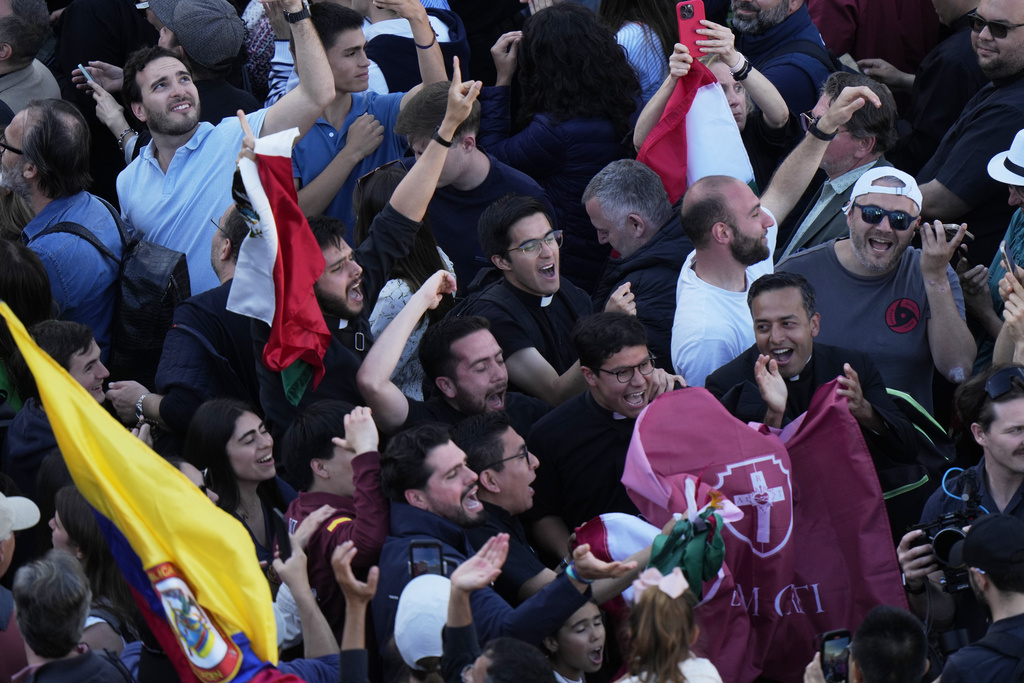VATICAN CITY (AP) — Cardinal Robert Prevost has taken the name Leo XIV. The Chicago-born missionary who spent his career ministering in Peru and took over the Vatican’s powerful office of bishops was elected the first pope from the United States in the 2,000-year history of the Catholic Church.
In his first words as Pope Francis ’ successor, uttered from the loggia of St. Peter’s Basilica, Leo, 69, said, “Peace be with you,” and emphasized a message of peace, dialogue and missionary evangelization. He wore the traditional red cape of the papacy — a cape that Francis had eschewed on his election in 2013. He spoke to the crowd in Italian and Spanish, but not English.
Here is the latest:
President Trump says ‘it’s such an honor for our country’
Trump spoke to reporters outside the West Wing, saying that for the new pope to be American, “What greater honor can there be?”
“We’re a little bit surprised and we’re happy,” Trump added.
US Secretary of State sends his greetings
Marco Rubio, a Catholic, issued a statement expressing his “heartfelt congratulations” to the new pope during “a moment of profound significance” for the church.
“The papacy carries a sacred and solemn responsibility,” Rubio’s message said. “May the Holy Spirit impart wisdom, strength, and grace as he shepherds the Church. The United States looks forward to deepening our enduring relationship with the Holy See with the first American pontiff.”

Background:
Cardinal Robert Prevost
Date of Birth: Sept. 14, 1955
Nationality: American and Peruvian
Position: Prefect of the Dicastery for Bishops; president of the Pontifical Commission for Latin America under Francis
Experience: Archbishop of Chiclayo, Peru; head of the Augustinian religious order
Made a cardinal by: Francis
Francis brought Prevost, 69, to the Vatican in 2023 to serve as the powerful head of the office that vets bishop nominations from around the world, one of the most important jobs in the Catholic Church. As a result, Prevost has a prominence going into the conclave that few other cardinals have.
One strike against him, however, is that he’s American, and there has long been a taboo against a U.S. pope, given the geopolitical power already wielded by the United States in the secular sphere. But Prevost, a Chicago native, could be a first because he’s also a Peruvian citizen and lived for years in Peru, first as a missionary and then as an archbishop.
Prevost was also twice elected prior general, or top leader, of the Augustinian religious order, the 13th century order founded by St. Augustine. Francis clearly had an eye on him for years, moving him from the Augustinian leadership back to Peru in 2014 to serve as the administrator and later archbishop of Chiclayo.
He remained in that position, acquiring Peruvian citizenship in 2015, until Francis brought him to Rome in 2023 to assume the presidency of the Pontifical Commission for Latin America. In that job he would have kept in regular contact with the Catholic hierarchy in the part of the world that counts still counts the most Catholics.
Ever since he arrived in Rome, Prevost has kept a low public profile, but he is well known to the men who count.
Significantly, he presided over one of the most revolutionary reforms Francis made, when he added three women to the voting bloc that decides which bishop nominations to forward to the pope. In early 2025, Francis again showed his esteem by appointing Prevost to the most senior rank of cardinals, suggesting he would at least be Francis’ choice in an any future conclave.
Prevost’s comparative youth could count against him if his brother cardinals don’t want to commit to a pope who might reign for another two decades.
The Rev. Fidel Purisaca Vigil, the communications director for Prevost’s old diocese in Chiclayo, remembers the cardinal rising each day and having breakfast with his fellow priests after saying his prayers.
“No matter how many problems he has, he maintains good humor and joy,” Purisaca said in an email.
— By Franklin Briceño in Lima, Peru, and Nicole Winfield in Vatican City
VATICAN CITY (AP) — White smoke is pouring out of the Sistine Chapel chimney, signalling that a pope has been elected to lead the Catholic Church.
That means the winner secured at least 89 votes of the 133 cardinals participating in the conclave to elect a successor to Pope Francis. The crowd in St. Peter’s Square erupted in cheers. The name will be announced later, when a top cardinal utters the words “Habemus papam!” Latin for “We have a pope!” from the loggia of St. Peter’s Basilica. The cardinal then reads the winner’s birth name in Latin, and reveals the name he has chosen to be called.

The crowd in St. Peter’s Square erupted in cheers, priests made the sign of the cross and nuns wept as the crowd shouted “Viva il papa!” after the white smoke wafted into the late afternoon sky at 6:07 p.m. Waving flags from around the world, tens of thousands of people waited to learn who had won.
The smoke signal means the winner secured at least 89 votes of the 133 cardinals participating in the conclave to elect a successor to Pope Francis.
As the crowd waited, the Swiss Guards marched out and a military band played, marching up the steps to the basilica.
The name will be announced later, when a top cardinal utters the words “Habemus Papam!” — Latin for “We have a pope!” — from the loggia of the basilica. The cardinal then reads the winner’s birth name in Latin and reveals the name he has chosen to be called.
The new pope is then expected to make his first public appearance and impart a blessing from the same loggia.
Eyes on the chimney
Earlier Thursday, large school groups joined the mix of humanity awaiting the outcome in St. Peter's Square. They blended in with people participating in preplanned Holy Year pilgrimages and journalists from around the world who have descended on Rome to document the election.
“The wait is marvelous!” said Priscilla Parlante, a Roman.
